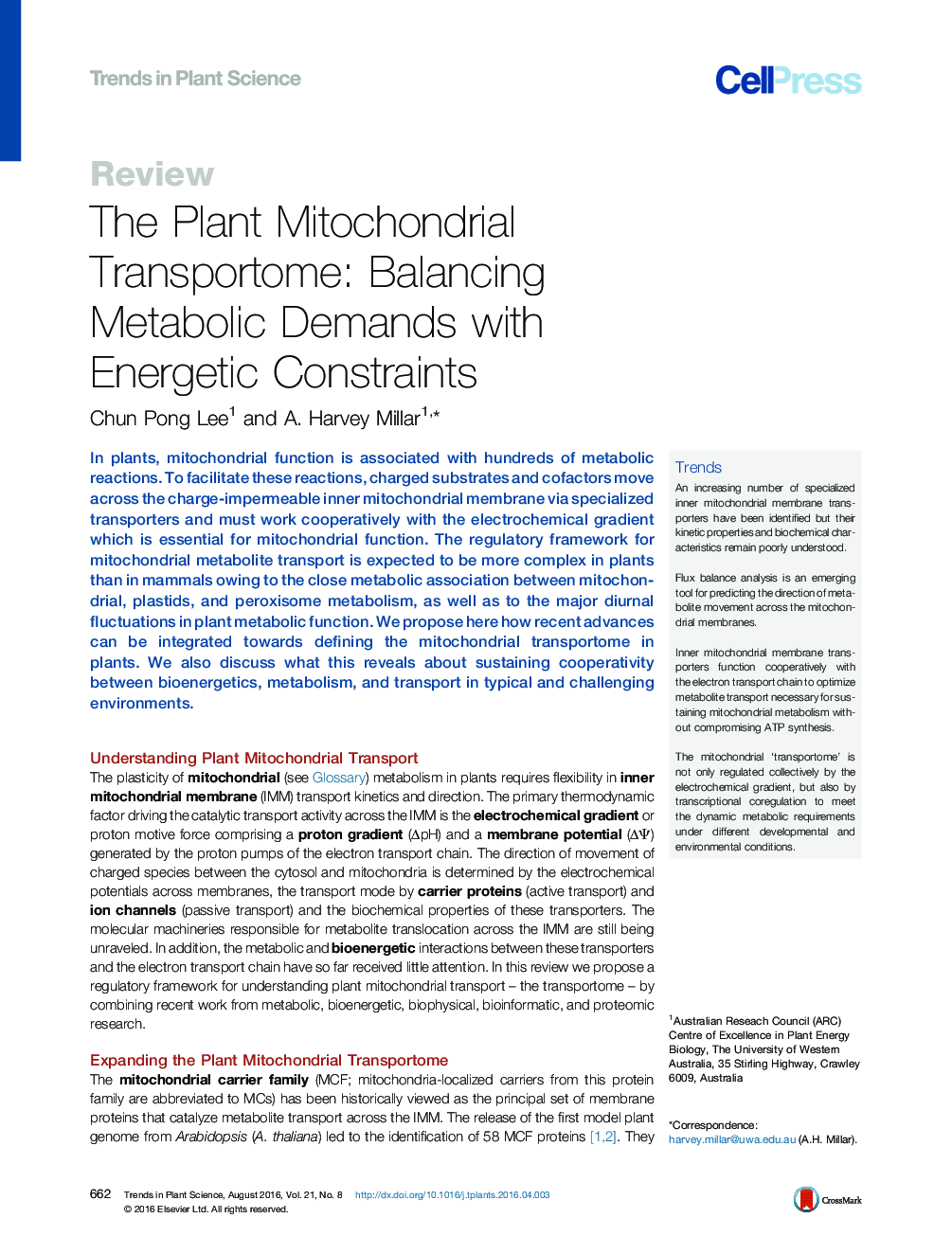| Article ID | Journal | Published Year | Pages | File Type |
|---|---|---|---|---|
| 2825697 | Trends in Plant Science | 2016 | 15 Pages |
In plants, mitochondrial function is associated with hundreds of metabolic reactions. To facilitate these reactions, charged substrates and cofactors move across the charge-impermeable inner mitochondrial membrane via specialized transporters and must work cooperatively with the electrochemical gradient which is essential for mitochondrial function. The regulatory framework for mitochondrial metabolite transport is expected to be more complex in plants than in mammals owing to the close metabolic association between mitochondrial, plastids, and peroxisome metabolism, as well as to the major diurnal fluctuations in plant metabolic function. We propose here how recent advances can be integrated towards defining the mitochondrial transportome in plants. We also discuss what this reveals about sustaining cooperativity between bioenergetics, metabolism, and transport in typical and challenging environments.
TrendsAn increasing number of specialized inner mitochondrial membrane transporters have been identified but their kinetic properties and biochemical characteristics remain poorly understood.Flux balance analysis is an emerging tool for predicting the direction of metabolite movement across the mitochondrial membranes.Inner mitochondrial membrane transporters function cooperatively with the electron transport chain to optimize metabolite transport necessary for sustaining mitochondrial metabolism without compromising ATP synthesis.The mitochondrial ‘transportome’ is not only regulated collectively by the electrochemical gradient, but also by transcriptional coregulation to meet the dynamic metabolic requirements under different developmental and environmental conditions.
